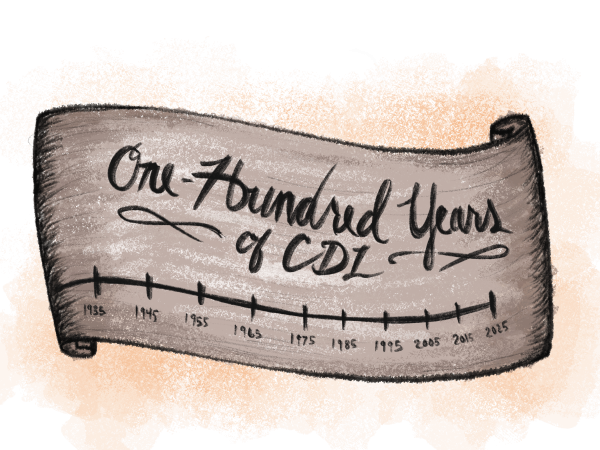Menu
The Evolution of the CDL License: A Century of Progress

The Advent of Driver Licensing
In the United States, the transportation industry has been a driving force behind the nation’s prosperity, with the Commercial Driver’s License (CDL) serving as a critical credential for those responsible for moving goods across the country. Let’s navigate the fascinating 100-year journey of the CDL license. We will highlight significant milestones and explore the modern Entry-Level Driver Training (ELDT) requirements implemented by the Federal Motor Carrier Safety Administration (FMCSA).
Early Days: Licensing Takes Root
The CDL’s history is intimately connected with the evolution of motorized transportation in America. As the automobile industry blossomed in the early 20th century, the need for standardized testing and licensing of drivers became increasingly apparent. According to a historical review by the University of Michigan, the first driver’s licenses were introduced in 1910, and by 1935, all states had some form of licensing. However, these early licenses didn’t distinguish between regular drivers and those operating heavy commercial vehicles.
The Motor Carrier Act of 1935
This changed dramatically with the Motor Carrier Act of 1935. This sought to regulate interstate trucking and create a safer, more organized transportation industry. It laid the groundwork for an advanced licensing system, but the CDL as we know it today was decades away.
The Modern CDL License Emerges
The Commercial Motor Vehicle Safety Act of 1986
The real turning point came with the Commercial Motor Vehicle Safety Act of 1986. This act established the CDL program nationwide. As a research paper from the University of California, Berkeley describes, this law standardized the requirements for driving commercial vehicles, essentially creating the modern CDL. The Act’s goal was to improve highway safety by ensuring drivers were competent and qualified to operate commercial vehicles.
Fast forward to today, and the CDL License has evolved into a comprehensive licensing system that ensures drivers have the necessary knowledge and skills to operate a variety of commercial vehicles safely. The Federal Motor Carrier Safety Administration (FMCSA), established in 2000, has been instrumental in this process, continually updating the CDL requirements in response to industry changes and safety data.
The ELDT Requirements and the Future of the CDL License
The Introduction of ELDT Requirements
One of the most significant recent changes to the CDL is the introduction of the ELDT requirements by the FMCSA. These new rules, effective as of 2020, mandate that certain training standards be met before a driver can apply for a Class A or Class B CDL, or upgrade their current CDL, or obtain certain endorsements.
The ELDT standards aim to enhance road safety by ensuring that CDL applicants receive high-quality instruction in both theory and behind-the-wheel training. The required topics cover a wide range of areas. This can be from operational procedures and vehicle inspections to safe driving and advanced operational practices. These changes reflect the FMCSA’s commitment to strengthening the CDL program. It also demonstrates a dedication to improving commercial vehicle safety on our nation’s highways.
The CDL License in the Future
Looking over the past century, the CDL’s journey is a testament to the United States’ commitment to improving road safety. There is also a commitment to professionalizing the transportation industry. From the Motor Carrier Act of 1935 to the Commercial Motor Vehicle Safety Act of 1986 and the current ELDT requirements, the CDL License has continuously evolved to meet the needs of a growing, changing industry.
As we move forward into the future, the CDL will undoubtedly continue to adapt and evolve. The simple fact that one can do half of their training nowadays online is a testament to this. With the FMCSA at the helm,we can expect further innovations. You can also expect regulations that will ensure the continued safety and efficiency of our nation’s roads. We are likely to see advancements in driver training with a greater emphasis on safety protocols. We will possibly even see the integration of autonomous vehicles into the CDL framework.
The FMCSA’s ongoing commitment to safety and technological advancements will undoubtedly shape the future of the CDL. As we’ve seen with the ELDT requirements, the FMCSA continues to raise the bar for commercial driving standards. They continue. to create a safer environment for all road users.
A Century of Progress
The history of the CDL License in the United States is a story of progression and adaptation, from the early days of motorized transport to the sophisticated system we have today. It’s a testament to the ongoing efforts to professionalize the trucking industry and prioritize the safety of our highways.
For anyone considering a career in commercial driving, understanding this history provides a valuable perspective on the industry’s evolution and the importance of the CDL. As the transportation industry continues to grow and evolve, the CDL license remains a pivotal part of that journey, symbolizing both the rich history of the past and the exciting potential of the future.
So, here’s to the CDL License – a century-old testament to the commitment to safety, efficiency, and professionalism in the U.S. transportation industry. The road ahead is long and full of potential, and the CDL will undoubtedly continue to play a central role in navigating that journey.
